The curious case of children’s literature
Goethe-Institut / Max Mueller Bhavan Mumbai, in association with SNDT Women’s University and Department of German, Mumbai University, organised a symposium on ‘Children’s literature: a curious case’ in 2018. The takeaway for books
04 Jun 2019 | By PrintWeek India
Tultul Biswas: The children in children’s literature
A broad definition of children’s literature would include reading material written especially for children and in which children are often protagonists. Isn’t that such a wonderful thing? Children’s literature seems to be the only category of literature that is defined by who reads it! Although, we may also admit here that children’s literature also forms the guilty pleasure of many an adult! But wait a minute! Is the fact that children’s literature is defined by its readers really such a happy situation?
We know that children’s books today cover a whole range from alphabet and number books to novels and encyclopaedias for teenagers and young adults. But let us take a quick look at the history of children’s literature to see what gives it the shape and the nature that it is struggling hard to break free from.
Wikipedia states: “Early children’s literature consisted of spoken stories, songs, and poems that were used to educate, instruct, and entertain children.”
Do you notice the order of these words? First comes ‘educate’, then ‘instruct’ and then, as the last priority, ‘entertain’.
Wikipedia goes on: “It was only in the 18th century, with the development of the concept of childhood that a separate genre of children’s literature began to emerge, with its own divisions, expectations, and canon.”
Let us turn to the French historian Philippe Ariès. In his 1962 book Centuries of Childhood (a bible for all of us who love children and question the notion of childhood!) Ariès argues that the modern concept of childhood only emerged in recent times. He explains that children were in the past not considered as greatly different from adults and were not given significantly different treatment. As evidence, he notes that, apart from instructional and didactic texts for children written by clerics, there was a lack of any genuine literature aimed specifically at children before the 18th century.
Can you believe that? Childhood as a concept, as a social construction, and children’s literature has been around only for about 200 years or so.
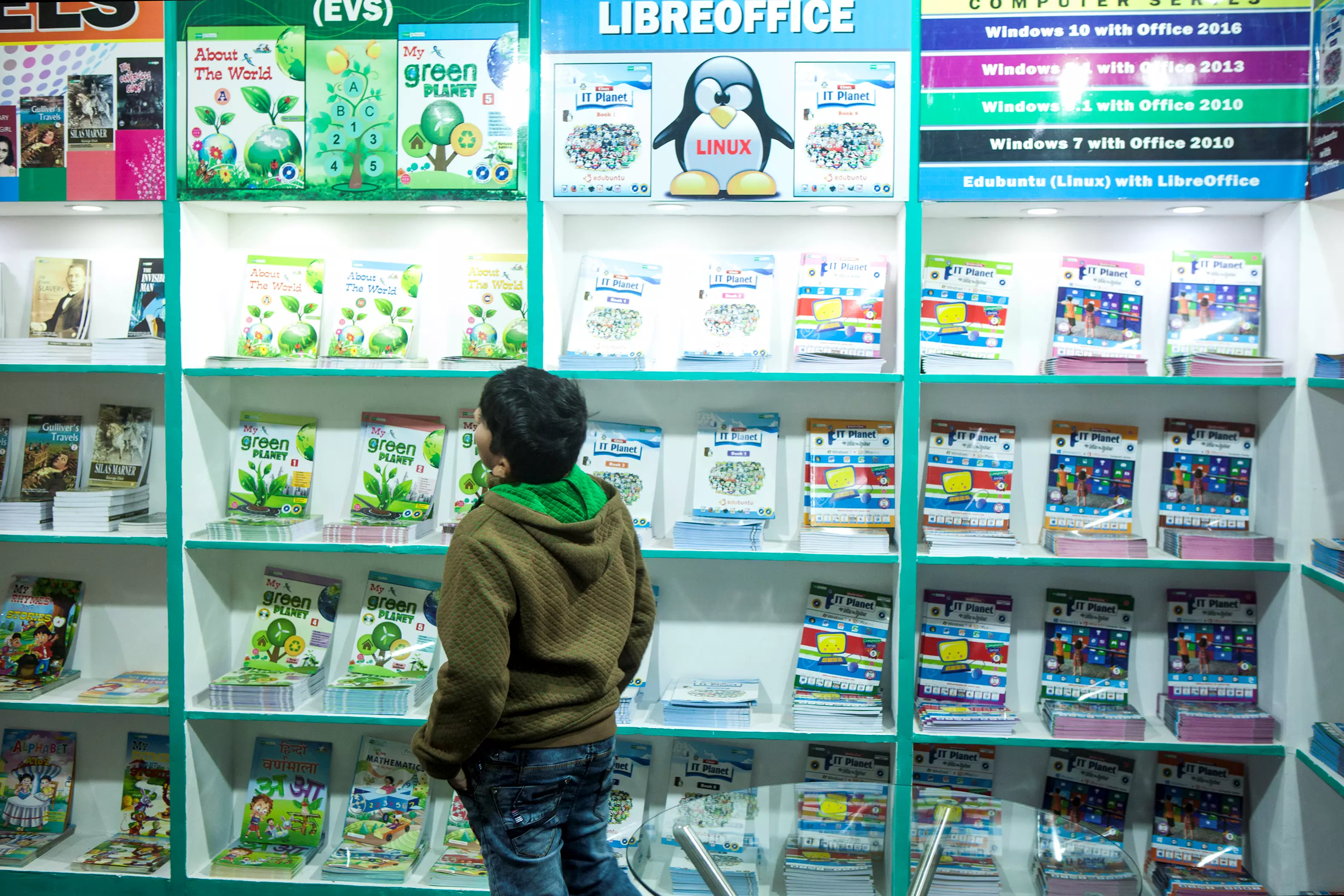
Not that we don’t have counter-arguments and qualifications to this line of thinking. We do have other scholars noting that there was a literature in some cultures. But what purpose did it serve? And here is the answer: It was “designed to convey the values, attitudes, and information necessary for children within their cultures”.
The Play of Daniel from the 12th century is an apt example. So that’s what has been shaping children’s literature for at least the past two centuries. No wonder children’s literature, even today, tends to be of a didactic and moralistic nature, with the purpose of conveying conduct-related, educational and religious lessons. It is difficult to break out of the shackles of history, even if it is only a couple of centuries old.
Hindi children’s literature
Turning our gaze towards Hindi children’s literature, we seem to find that this is relatively a more ancient phenomenon. The earliest forms known have been oral narratives based on local myths and legends and adventures of heroes from epics. Panchatantra, the much translated epic from around third century BCE seems to be one origin. And here too, the purpose of this narrative by Vishnusharma was to teach ‘niti’ (or morals) to three princes! The other epics that have an important place in the history of Hindi children’s literature are the Jataka Tales, the Hitopadesa, the Ramayana, and the Mahabharata.
In early post-Independence years, the National Book Trust was set up with a strong agenda of nation-building. It served the purpose well by publishing not only in Hindi but also in at least 13 other Indian languages simultaneously. It also started experimentation in children’s books, with attention towards illustration and book design as essentials of the process.
Around the same time, the Children’s Book Trust was set up to publish books which would make Indian children aware of their rich and worthy cultural heritage and also inculcate scientific temper to prepare them for the modern world. Magazines such as Vidyarthi, Shishu, Bal Sakha had created the space for a periodic interaction between children and literature. Later, entrants like Nandan, Parag and Chakmak paved the way for a new kind of writing for children — something that did not talk down at the children but treated them as thoughtful intellectual beings.
With a proliferation of books for children in Hindi, the idea that textbooks were the only source of exposure to children’s literature (and to learning) slowly gave way. Gradually, the importance of good illustration, book design, paper, size of the book, the font used, and above all a storyline that a child reader can identify with rather than one that ‘teaches’ something, found its way into conversations around children’s literature in Hindi, too. Budhiya ki roti, Bas ki sair, Mahagiri, Nanihal mein guzre din, Rupa hathi are a few examples that have given space to adventure, wit, fun, intergenerational relationships and dialogues between adults and children as the salient features in a book.
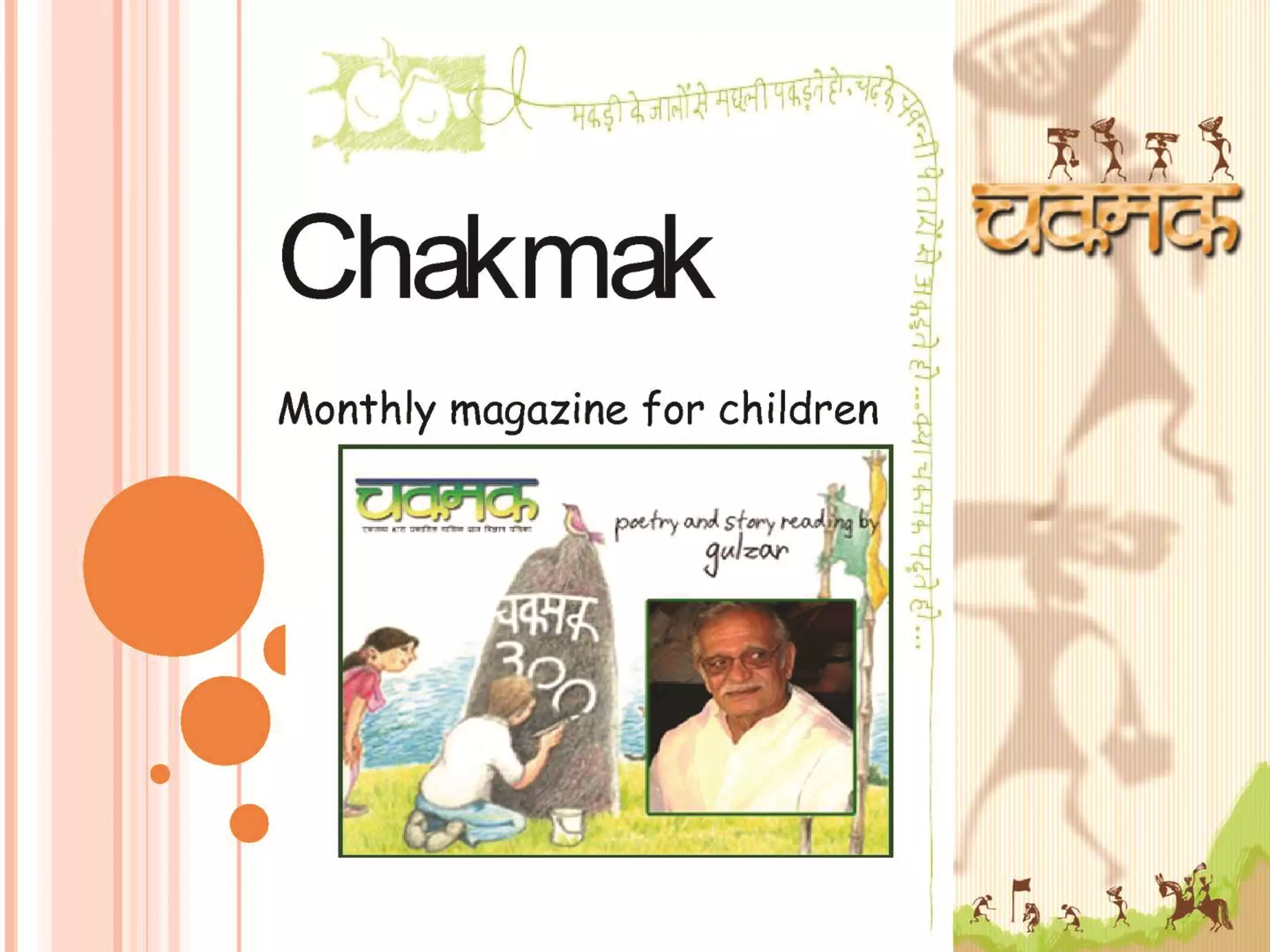
The children’s magazine, Chakmak
Still, the introduction of the element sheer reading pleasure is but a nascent phenomenon for the world of Hindi children’s books. Imaginative stories like Batuta ka joota, Ped ghoomne chala, Bhalu ne kheli football have tried to experiment with the fun element and have been liked by young readers widely.
As adults continue to be the chief creators and decision makers of children’s literature — loaded with their purposive anxiety of passing on their rich past to a new generation — and as children themselves become more and more vocal about their choices and likes and dislikes, the world of children’s literature is today an arena of continued constructive struggle. We do now have stories that simply try to understand the young reader and his or her life, to portray lived experiences, to experiment with the tensions of reality.
Who is missing in this new picture?
With all the hue and cry about how the world of Hindi children’s literature is expanding by leaps and bounds and also developing as a genre significantly, we have lost track of children from the margins of society. There are many categories of children who are still invisibilised in society and in children’s literature.
I cannot claim to have looked at all the books published for children in Hindi in the past 20 years, but I have surely studied at least about 40% of the lot. And a careful reading of these books being published, read, enjoyed and celebrated reveals that only about 1% of them speak to the children from the margins — adivasi children, children of working class parents.
And even when they are given a space in books, more often than not, as characters, they are expected to perform some heroic deed, overcome some obstacle, achieve some feat to get even that inch of space. And so we have Raju ka Cricket Match, where Raju is a boy with polio who just has to win the school cricket match. How else can a story be written about him and the book published? Can we please get over this tokenism and give a respectful space to our child characters in books that are actually theirs?
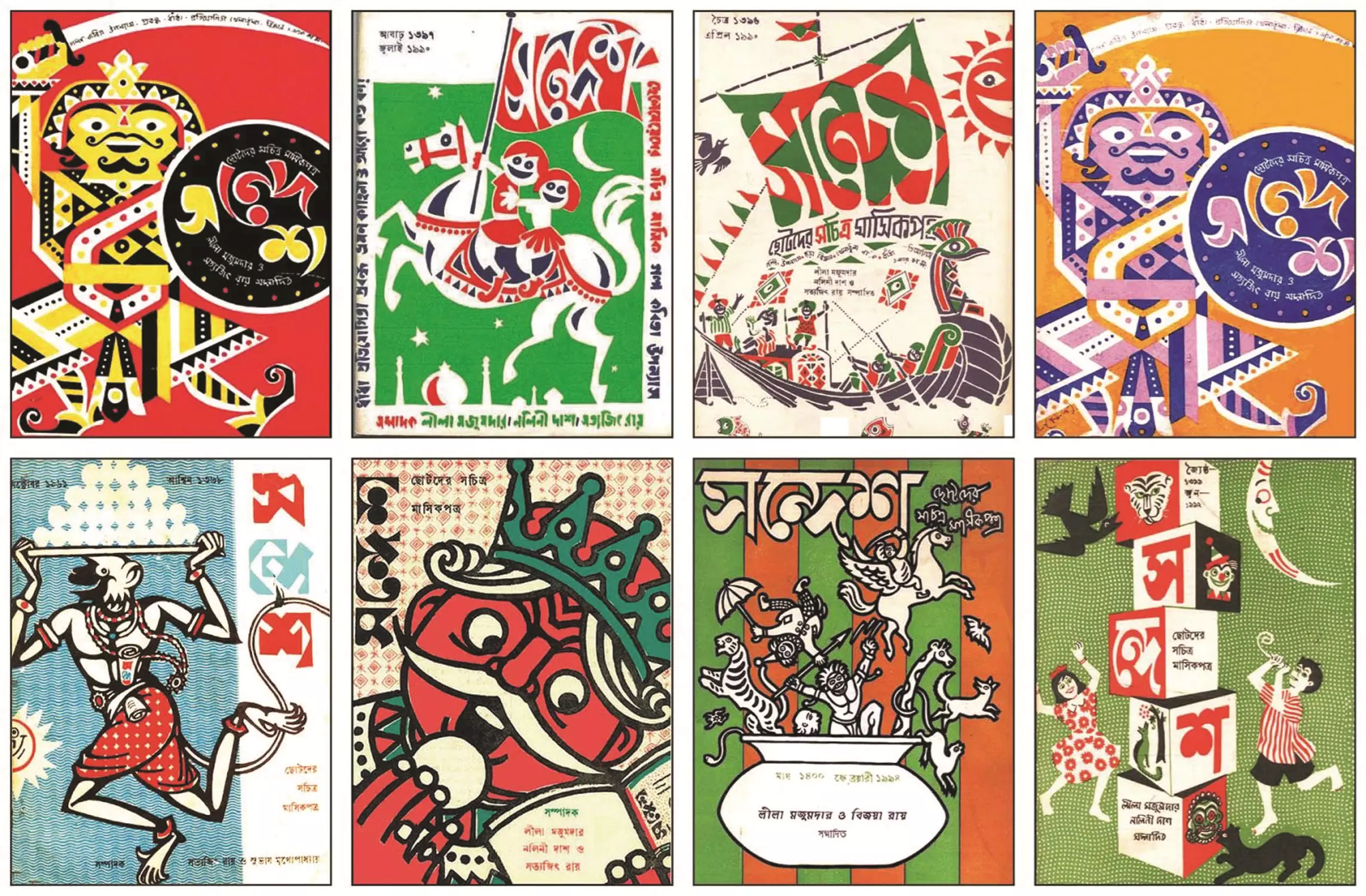
The Bengali children’s magazine, Sandesh
With the Right to Education Act 2009 in place, we have a huge number of first generation school-goers joining the reading club. And they don’t find themselves in the books they read. They don’t relate to the stories we are giving out to them.
Dipanwita Roy: Children literature in Bengali
From the very beginning, Bengali children’s literature was influenced by western, particularly, English literature as the early writers were themselves products of western education. While the early works drew ideas from the stories and folk tales from the western world, the authors were remarkably adept at casting them in native mould, creating a Bengali-fiction of themes, so as to touch the little minds and hearts.
A break with western influence came with the discovery of Bengali folklore in the early part of the 20th century. The pioneering work of Dakshinaranjan Mitra Mazumdar, who scoured the length and breadth of undivided Bengal to collect folk tales’ villages and small towns, led to the publication of the first collection of Bengali folk tales titled Thakurmar Jhuli (Granny’s Bin).
The year was 1907. It was path breaking work by Mazumdar and Rabindranath Tagore writing the preface of Thakurmar Jhuli acknowledged this. For a long time, Thakurmar Jhuli was the chief attraction in the genre of Bengali folklore and we, in our generation, grew up mostly on it. Later, the European folk tales were introduced to Bengali children by Sukhalata Rao.
Soon after its emergence, children’s literature became an important part of Bengali literature. This is because magazines such as Mukul, Sakha O Sathi, Sandesh or Mouchak had all along provided opportunity to budding as well as eminent writers to try their hands at children’s literature. In due course, there were numerous children’s magazines in circulation. This tradition continued for 70-75 years.

The 1980s heralded the age of consumerism in Bengali society. Television entered the household and the practice of gifting books to children at birthday parties became un-cool. As the children turned away from books, the magazines started to fall. In the last two decades of the 20th century, several of these magazines had shut shop.
From the early 2000s, there emerged a bunch of new writers in the world of Bengali children’s literature. Most of them were in the age group of 30-40. Being younger than most established writers, they could connect with the children better. They also started introducing new and emerging topics of interest in their writings, attracting the attention of young minds. My own journey as a writer for children also began at the same time. My first book, a collection of short stories, Chupti Kore Galpo Shono, was published in 2008.
From the pioneering work of Mazumdar to later works, Bengali folklore remained, for a very long time, a modified or brushed-up rendition of the age-old stories and tales. Finally, Shailen Ghosh appeared on the scene, with his array of original writings which created magic enough to attract the children. Still later, Nabaneeta Dev Sen created some original fairy tales.
Dr Sushama C Powdwal: Children’s writing in Marathi
If we review the history of Marathi Children’s literature, we find that it started with a children’s magazine, edited by VK Oak viz, Balbodh published in 1881. Before this, the oral tradition of chanting Manache shlok by Saint Ramdas, abhangas of other saints like Jnyneshwar, Tukaram, Janabai, Kekawali of Moropant existed in households of Maharashtra and it paved way for modern writers and poets. Similarly, the religious stories were read, in particular Hindu month of shravan, called as kahunas starting with ‘at pat nagger hot an’ and ending with ‘sathe uttara chi kahuna pasha uteri sepal samurai’ are the precursors of children’s stories.
Early published books were translations like Aesop’s Fables by SK Chhatre and Sanskrit Panchatantra by VB Tamhankar. Then ushered an era of text books and special books for children written by Tarabai Modak, who worked very closely with Gijubhai Badheka, a well-known educationist. Hilarious books like Javayachya Goshti (Stories of Son-in-Law), Aajibaichya Goshti (Grandmother’s Tales) which contained folk element were very popular in 1940s and 50s. Though these stories were humorous, they had a didactic tone. At the same time or little before, Acharya PK Atre’s Navyug Vachanmala, a textbook series attracted the attention of educationists and was widely accepted by children.
The Vachanmala is published even in 2017. CV Joshi was another writer who created humorous characters like Chimanrao and Gundyabhau. His humorous prose writings were widely read by children.
In 1950s and 1960s, all celebrity writers also involved themselves in writing for children. Some of them, Balkavi, Keshavsut unconsciously wrote beautiful poems. Later on, other celebrities like Vinda Karandikar, Mangesh Padgaonkar, Gangadhar Gadgil, Shanta Shelke, Vrunda Limaye and others contributed significantly in this area. Karandikar wrote poetry for children which were an outcome of an effort to bring his son out of psychological fear.
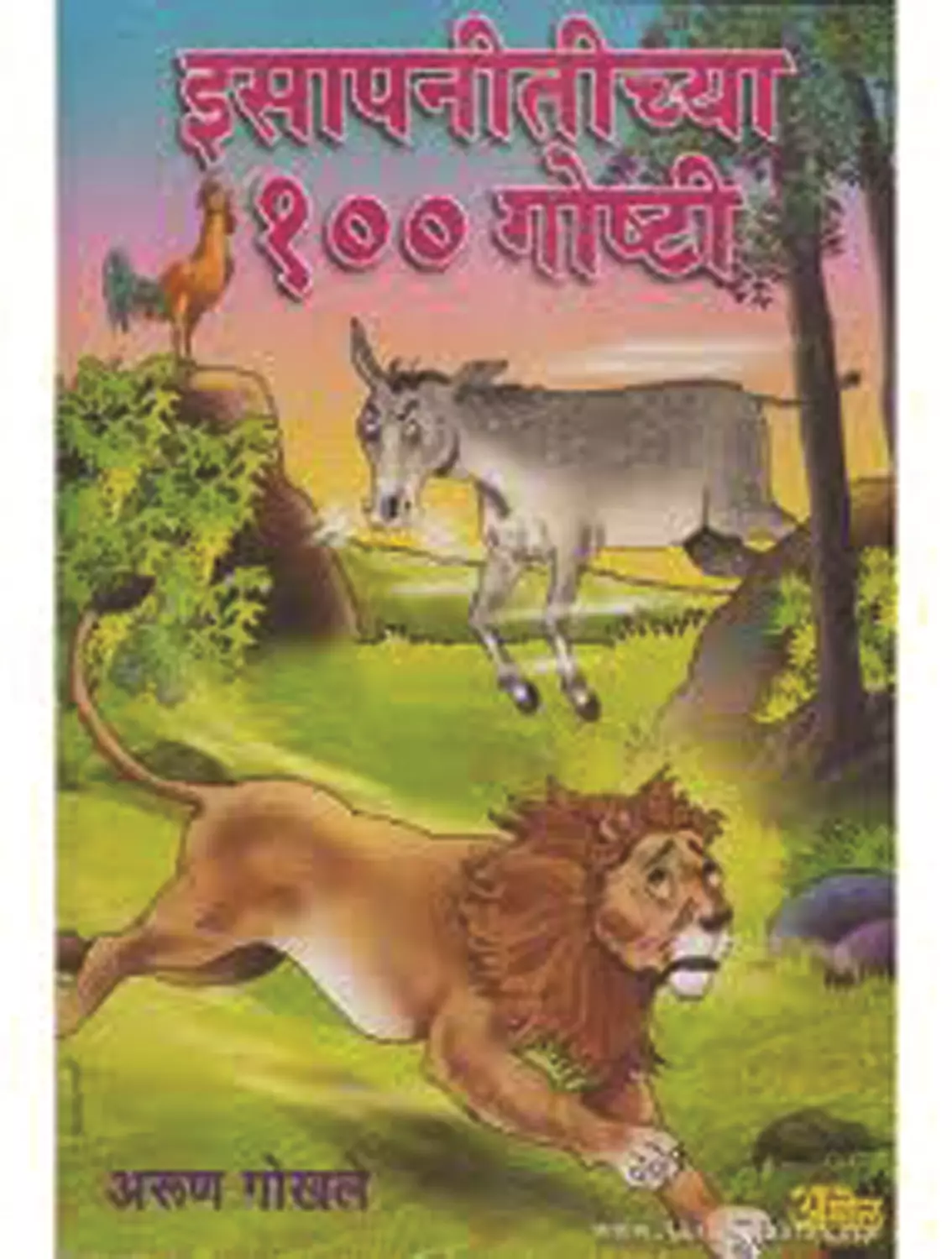
In 1960s, the need of exclusive writing for children was stressed and stories of Gotya and Chingi, two ideal characters were written by ND Tamhankar. Authors like Sane Guruji and BR Bhagwat wrote for children.
From 1980s onwards, different types of children’s literature were published besides poetry and folklore. There was also science fiction which was meant for adolescents. Some of the writers in this area are well-known scientists— Jayant Narlikar, Bal Phondke, and Laxman Londhe.
The 1990s ushered the era of writers who wrote exclusively for children like Madhuri Purandare, Anant Bhave, and Rajeev Tambe. Some versatile writers like Dilip Prabhavalkar penned some of the excellent writings for children with a series of books on Bokya Satbande. Madhuri Purandare is a Sahitya Akademi award-winning writer in Marathi who has written beautiful stories of Radha and Yash.
Dr Monica Khanna: New themes in children’s books
While until Independence, Indian children’s literature in English as a separate genre was negligible, even after Independence, most Indian children grew up reading about western stories, like those of Nancy Drew and Hardy Boys.
The first children’s book in English published in India was perhaps Chota Henry by Mrs Sherwood, published in 1814. The Children’s Book Trust, the government agency to promote children’s literature, was established in 1957. Since then, especially in the recent years, we have seen numerous publishing houses focused exclusively in publishing children’s content.
Talking about books for young readers (5-10 years), we have seen a major change in attitudes in the books published in the last two decades. Earlier, most of these stories would be mythological or animal fables. The stories would be didactic and moral, with overt and direct messages and with an attempt to inculcate values of honesty, hard work, loyalty, and righteousness. Comparatively, contemporary literature for children showcases experimentation with contemporary themes. It attempts at creating a world that is fantastic and yet closer to reality. We have also seen an advent of publishers focusing on children’s books and a conscious movement to inculcate reading habits.
Sandhya Taksale: Can we change the game?
When it comes to availability of books for children, the reality is, there are not enough books; not enough languages and not enough access. According to a Tata Trust survey, the availability ratio is one book per five children and in rural areas it is one book per 11 children.
It’s a vicious circle. Publishers say, “We don’t get quality content. Well-known authors don’t write for children. On the other hand, we can’t afford good illustrators. Their budget is too high.” Then add paper and printing cost to it. And the biggest monster is the distribution system, it eats up a large chunk of money. The publisher has to give 30, 40, 50% discount to the booksellers and this shoots up the price of a Rs 35 book to Rs 150 to Rs 200.
But the sunny side of the story is there are still authors, illustrators, publishers and organisations that are trying to overcome these difficulties and are reaching out to children with good and quality content.
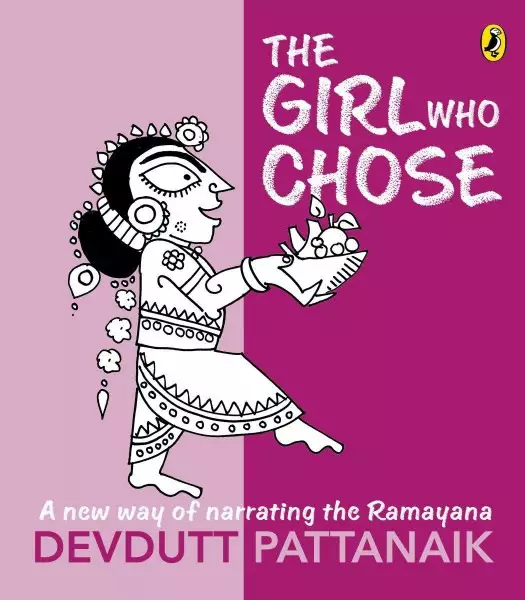
Pratham Books is one of them. It is a not-for-profit trust which publishes children’s book in many Indian languages. It has two major objectives. One, create affordable supplementary readers in multiples Indian languages. Two, provide access to all children through innovative means.
So far, Pratham has published 350 titles in 20 languages, while distributing 15 million books and 16 million Story Cards.
Thinking out-of-the-book
Still, the distribution system is a challenge. One way out is to reach out to schools and NGOs directly. But the best way is to think out-of-the-book. That’s what Pratham has done with introduction of StoryWeaver.
StoryWeaver is India’s first open source, digital repository of multilingual children’s books. Today, children don’t want to read but they are addicted to the screens of mobile, computer and tablet. And StoryWeaver has turned this challenge into an opportunity.
Two things changed the game in the most profound way —multilingual digital platform called StoryWeaver and the use of open license CC-BY-4.0. This Creative Commons licence allows anyone to read, download, reuse, and remix the stories all for free. Users can version them or translate them into new language. They can create new stories using the large bank of illustrations. Almost 8,000 illustrations are available.
This has significantly helped in creating material in mother tongue languages. On StoryWeaver, there are 24 mainstream Indian languages, tribal languages (Gondi, Kora, Santali and others), minority languages, classical languages and even dialects (like Surjapuri and Saurashtra).

The Pratham Books stall at the New Delhi World Book Fair
(The original presentations by the individual speakers have been truncated and edited for the purpose of this feature.)


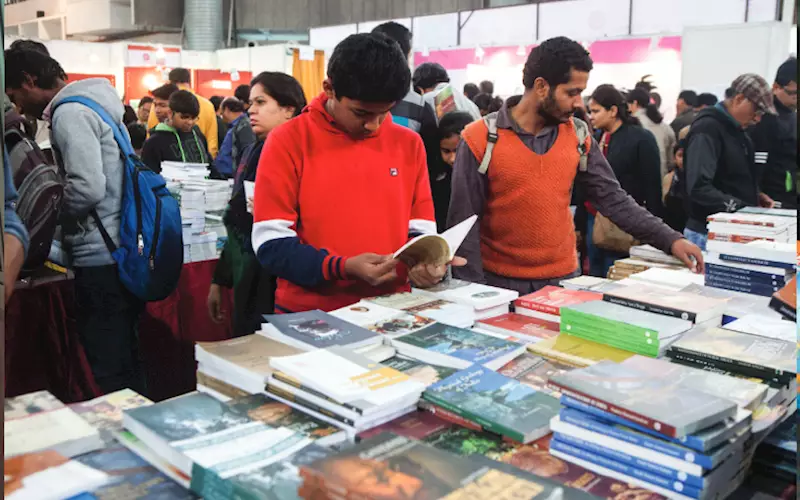








 See All
See All